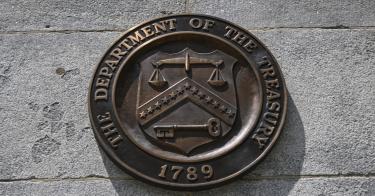Trust is always harder to build than to destroy, and that’s true for financial markets too. The U.S. has borrowed tens of trillions of dollars and promised to pay it back, but investors have become increasingly skeptical. On Aug. 1, U.S. debt received a downgrade, meaning the Treasury appears less likely to be able to pay back the nation’s debt in a timely manner. That’s going to cost taxpayers.
The company behind the downgrade of U.S. Treasuries was Fitch, a nationally recognized statistical ratings agency (NRSRO). This isn’t the first time an NRSRO has downgraded U.S. debt. Standard & Poor’s did so in 2011, and Egan Jones followed suit in 2012. Each of these three downgrades has been preceded by high levels of government spending and record levels of government debt.
The downgrade by Fitch is not a big move in terms of overall rating, but it is significant. The drop from AAA to AA+ is still firmly in investment-grade territory, meaning the odds of default in the near term are still extremely unlikely, but it should not be ignored.
Debt is downgraded because the borrower is waving red flags. In the case of the U.S., we have over $32 trillion in debt and are currently adding trillions per year. Total annual interest payments alone on that much debt costs us about $1 trillion—more than the entire Defense budget—and spending keeps growing. That is a recipe for insolvency and eventual default.
>>> Question Biden’s Mismanagement at Your Own Financial Risk
Unlike commercial paper (debt issued by corporations), governments have more than one way to default on their debt. Both corporations and governments can simply fail to make timely payments on their debt, resulting in an explicit default, but governments can also inflate their debt away by devaluing their currency. That’s precisely what we’ve seen under President Joe Biden.
Since Biden became president, the dollar has lost 16% of its value—about 6% per year. If you lent the Biden administration money at the time of his inauguration, say at 2% interest, after inflation you would have actually lost 4% per year, or 12% on your investment. Your 2% rate of return was really a donation to the government.
It doesn’t take a Ph.D. in economics to see that this isn’t the promised payback. It’s a hidden default.
Investors realized this long before Fitch announced its downgrade of U.S. debt. Congress and the White House have been on a multi-trillion-dollar spending binge for three years, and the Federal Reserve has been all too happy to print the money needed to finance these blowout budgets. The result was 40-year-high inflation and a massive reduction in the U.S. dollar’s purchasing power.
That’s why the yield—the interest rate, meaning how much investors demand to be compensated for loaning their money—on U.S. debt has been steadily rising this year. My own empirical research has shown that NRSRO ratings tend to be lagging indicators of sovereign debt yields, since investors already know which governments are fiscally sound and which are barreling towards financial oblivion.
In terms of impact, a higher yield on U.S. debt means borrowing is more expensive for the Treasury, resulting in higher interest expenses. Like any Treasury expense, this cost is passed on to taxpayers. The financing cost of the U.S. debt is already exploding and quickly eclipsing almost everything else in the budget.
>>> How Americans Have Taken a Pay Cut Every Month Since Biden Took Office
In June, the most recent month for which we have data, the Fiscal Service showed that the U.S. Treasury spent $120 billion on interest on the debt and a cumulative $650 billion in the current fiscal year. Interest on the debt now exceeds every line item in the Fiscal Service’s monthly statement except for the Social Security Administration and the Department of Health and Human Services.
And the problem is getting worse as the government continues racking up gargantuan deficits. In the first nine months of this fiscal year, the federal government has already amassed a larger deficit than the entire previous fiscal year—and we still have a whole quarter to go.
Congress and the White House need to immediately get their financial house in order. If they don’t, we’ll be right back on the inflation roller coaster with more hidden defaults on U.S. debt.
That will mean even higher yields, which leads to higher interest payments, which means even faster growing debt, and so on—a veritable death spiral. Time is running out before we reach the point of no return.
This piece originally appeared in MSN




